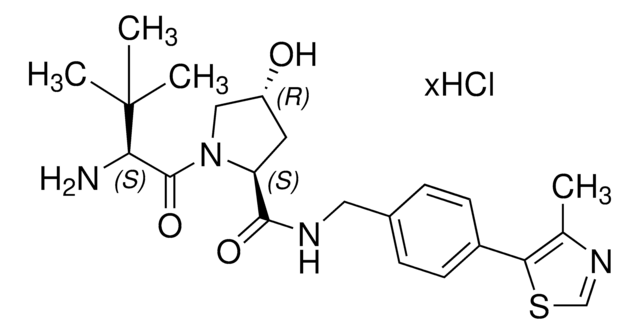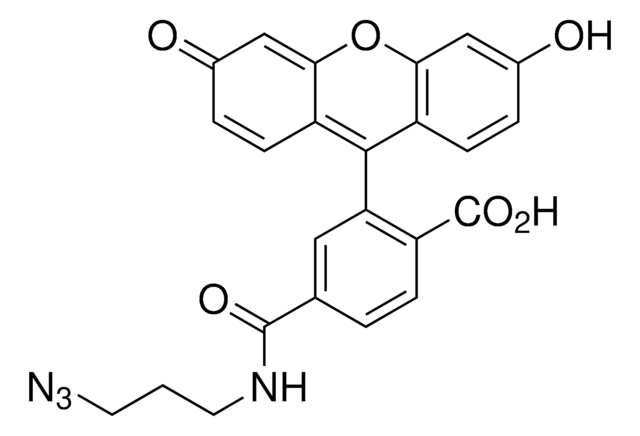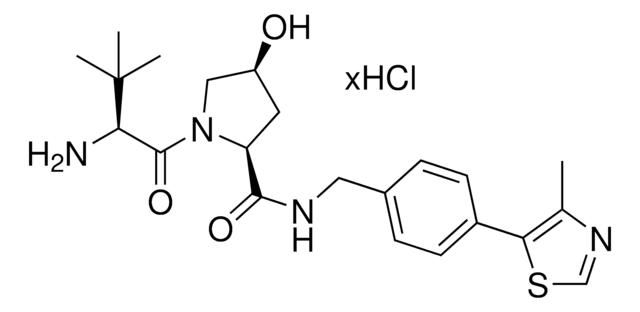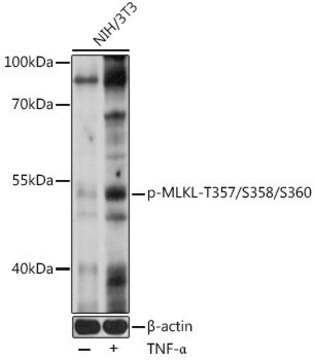Kluczowe dokumenty
924229
(S,R,S)-AHPC-Me
95%
Synonim(y):
(2S,4R)-1-((S)-2-amino-3,3-dimethylbutanoyl)-4-hydroxy-N-((S)-1-(4-(4-methylthiazol-5-yl)phenyl)ethyl)pyrrolidine-2-carboxamide, PROTAC® research ligand, VH032 methyl derivative
About This Item
Polecane produkty
ligand
VH032
Poziom jakości
Próba
95%
Formularz
powder
temp. przechowywania
2-8°C
ciąg SMILES
C([C@H](C(C)(C)C)N)(=O)N1[C@H](C(N[C@@H](C)C2=CC=C(C=C2)C3=C(C)N=CS3)=O)C[C@@H](O)C1
Zastosowanie
Related Technology Spotlight: Degrader Building Blocks for Targeted Protein Degradation
Browse our growing synthesis and research tools: Protein Degrader Building Blocks
Inne uwagi
Discovery of ARD-69 as a highly potent proteolysis targeting chimera (PROTAC) degrader of androgen receptor (AR) for the treatment of prostate cancer
Design, Synthesis, and Biological Evaluation of MEK PROTACs
Antibody–PROTAC Conjugates Enable HER2-Dependent Targeted Protein Degradation of BRD4
Discovery of a First-in-Class Mitogen-Activated Protein Kinase Kinase 1/2 Degrader
Discovery of PROTAC BCL-XL degraders as potent anticancer agents with low on-target platelet toxicity
Discovery of MD-224 as a First-in-Class, Highly Potent, and Efficacious Proteolysis Targeting Chimera Murine Double Minute 2 Degrader Capable of Achieving Complete and Durable Tumor Regression
A caged E3 ligase ligand for PROTAC-mediated protein degradation with light
Discovery of SHP2-D26 as a First, Potent, and Effective PROTAC Degrader of SHP2 Protein
Selective CDK6 degradation mediated by cereblon, VHL, and novel IAP-recruiting PROTACs
Informacje prawne
produkt powiązany
Kod klasy składowania
11 - Combustible Solids
Klasa zagrożenia wodnego (WGK)
WGK 3
Temperatura zapłonu (°F)
Not applicable
Temperatura zapłonu (°C)
Not applicable
Wybierz jedną z najnowszych wersji:
Certyfikaty analizy (CoA)
Przepraszamy, ale COA dla tego produktu nie jest aktualnie dostępny online.
Proszę o kontakt, jeśli potrzebna jest pomoc Obsługa Klienta
Masz już ten produkt?
Dokumenty związane z niedawno zakupionymi produktami zostały zamieszczone w Bibliotece dokumentów.
Nasz zespół naukowców ma doświadczenie we wszystkich obszarach badań, w tym w naukach przyrodniczych, materiałoznawstwie, syntezie chemicznej, chromatografii, analityce i wielu innych dziedzinach.
Skontaktuj się z zespołem ds. pomocy technicznej








